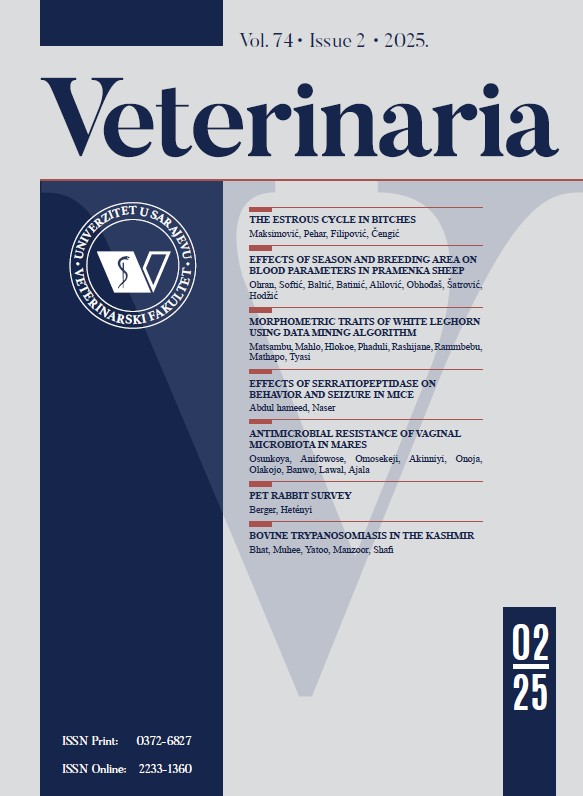Myasthenia gravis in a toy poodle dog: A case report
DOI:
https://doi.org/10.51607/22331360.2024.73.1.72Keywords:
dog, muscle, myasthenia gravis, pyridostigmine bromide, tetraparesisAbstract
Myasthenia gravis (MG) is an immune-mediated, neuromuscular disorder primarily characterized by muscle weakness and excessive fatigue. Three forms of myasthenia gravis have been described in dogs: focal, generalized, and acute fulminating form. A six-year-old, male toy poodle presented with weakness, intermittent paresis, voice change, and inability to jump or climb the stairs for seven days. Clinical examination revealed ataxia, muscle weakness, and ambulatory tetraparesis. Forelimb hopping revealed poor follow-through, and wheelbarrow was abnormal. The withdrawal reflex was reduced. Complete blood count showed thrombocytopenia, a slight increase in mean platelet volume (MPV), and decreased level of plateletcrit (PCT). Biochemistry analysis was unremarkable. An acetylcholine receptor (AChR) antibody test was performed due to the suspicion of myasthenia gravis. The test detected circulating antibodies to the acetylcholine receptor and positive results confirmed the suspected diagnosis. Acetylcholinesterase (AChE) inhibitors are usually the first line of therapy. Pyridostigmine bromide is the most commonly used AChE inhibitor, and it was the drug of choice in this case (2,5 mg/kg PO q 12h). The dose of pyridostigmine bromide was reduced by 50% after nine months, and the therapy was discontinued after one year due to the test results in the reference values, and the absence of clinical signs.

Downloads
Published
How to Cite
Issue
Section
License
Copyright (c) 2024 Antea Ljubez; Denis Čamo, Tarik Mutevelić (Author)

This work is licensed under a Creative Commons Attribution 4.0 International License.







